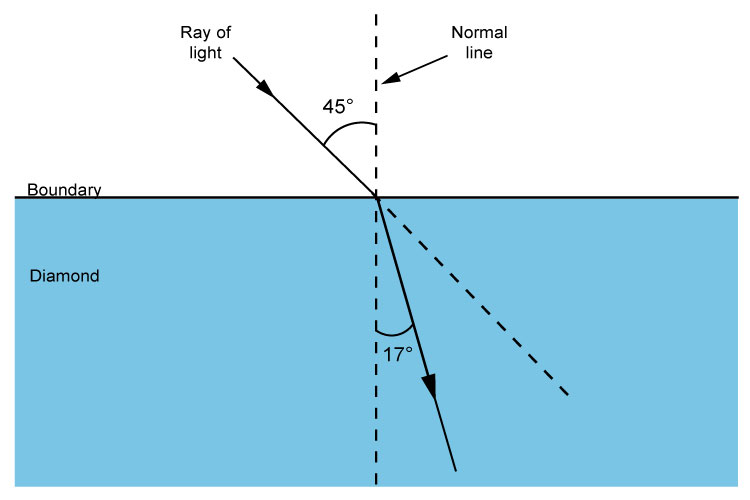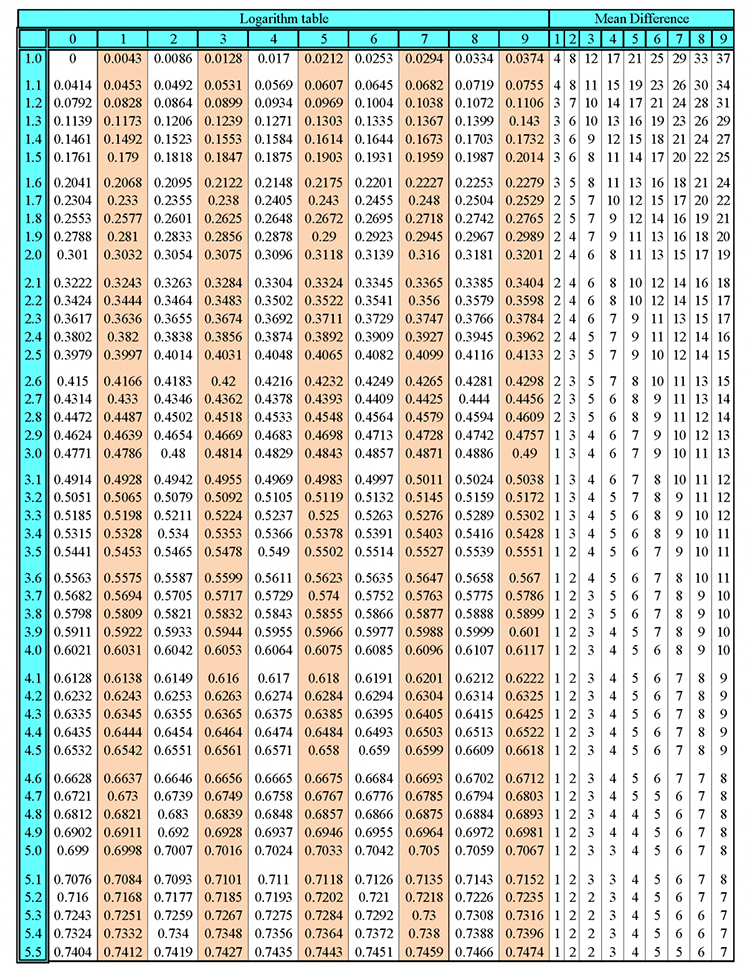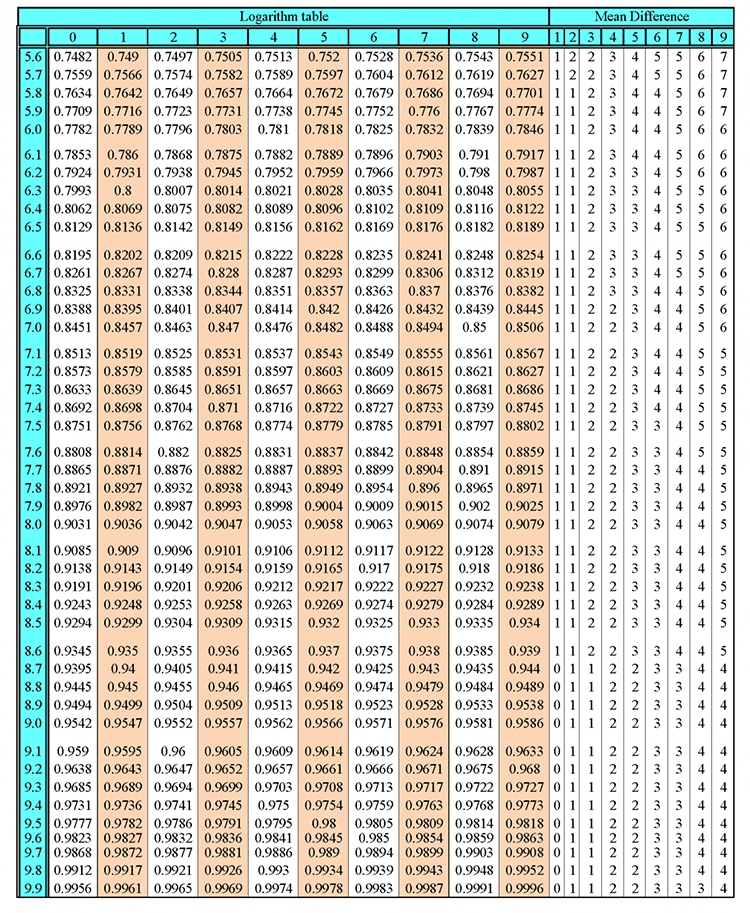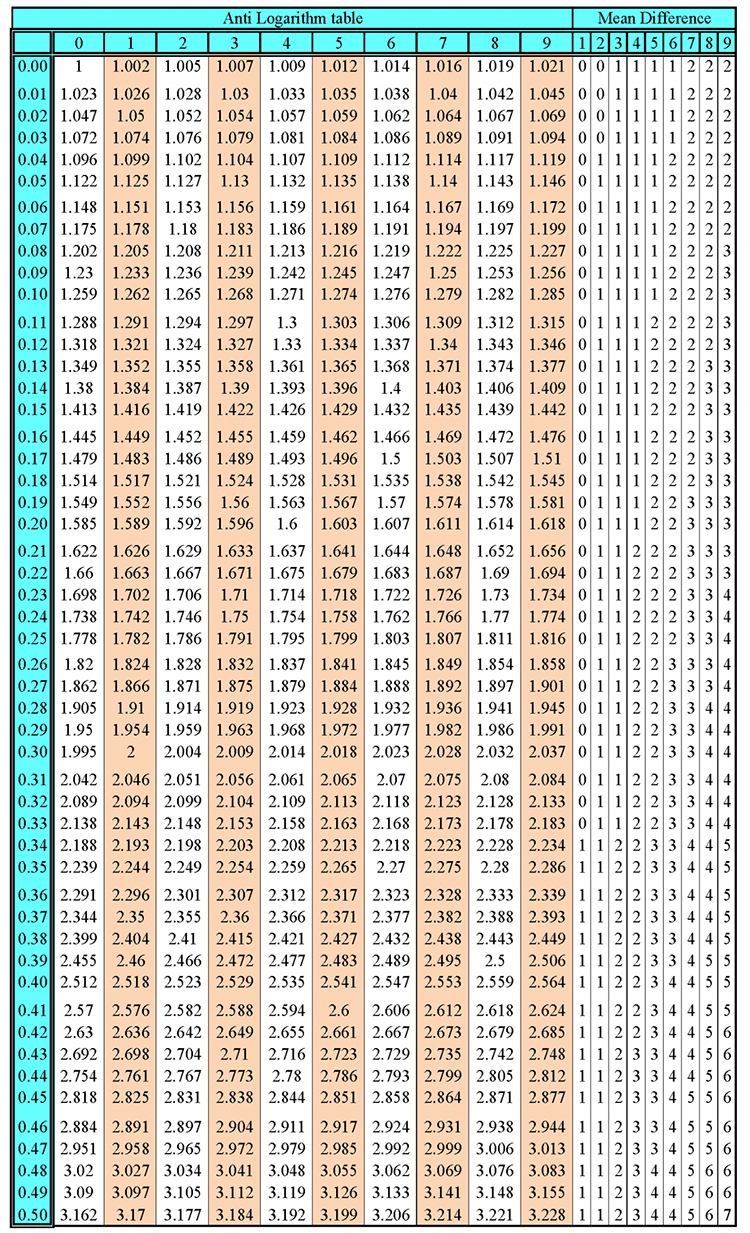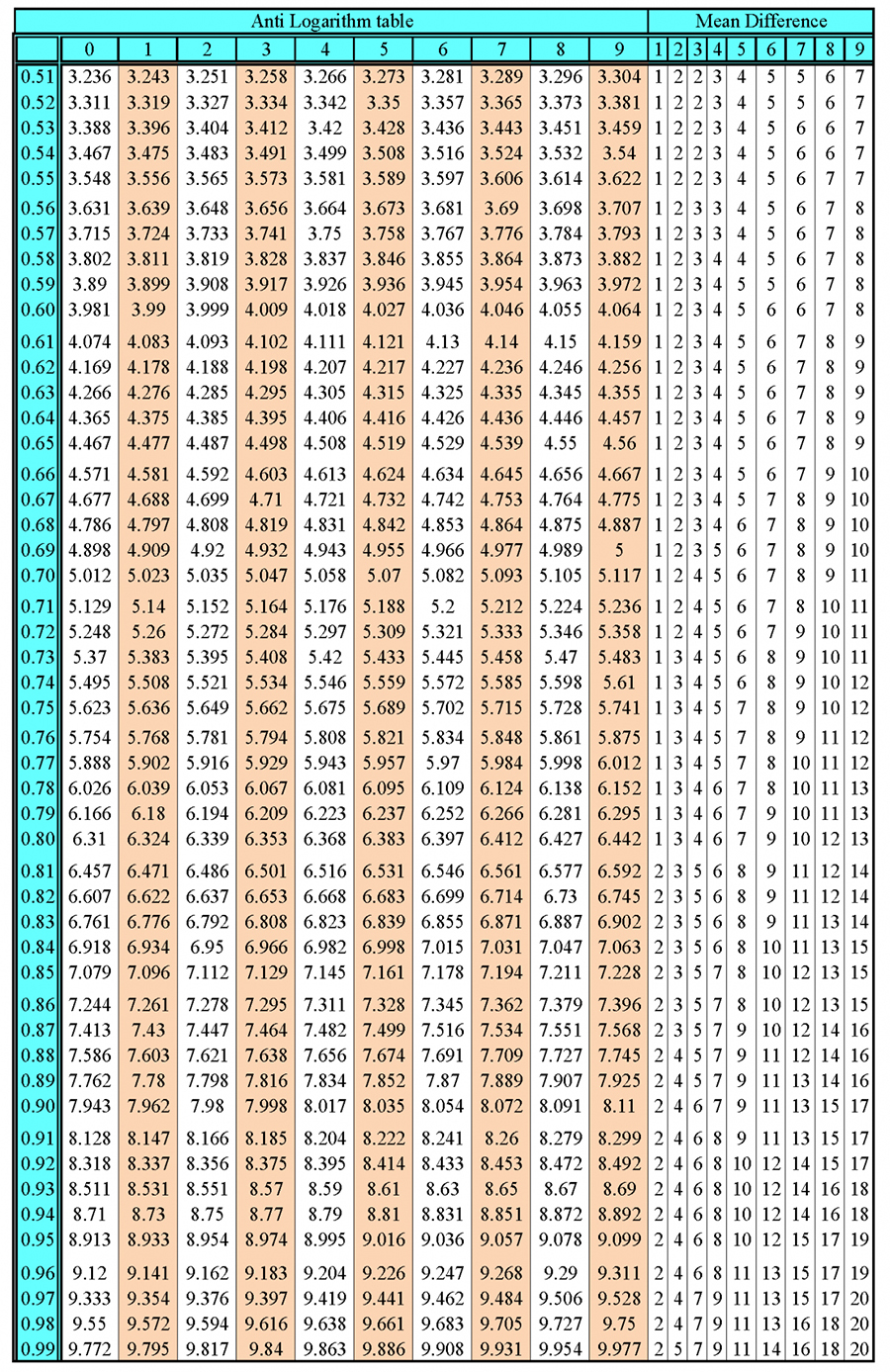Different refractive indices
The refractive index is a ratio but it actually means that:
Refractive index `(n)` is the extent to which light is refracted (changes direction) when it enters a medium.
Also note that `n` is a constant for a particular medium.
Some examples are:
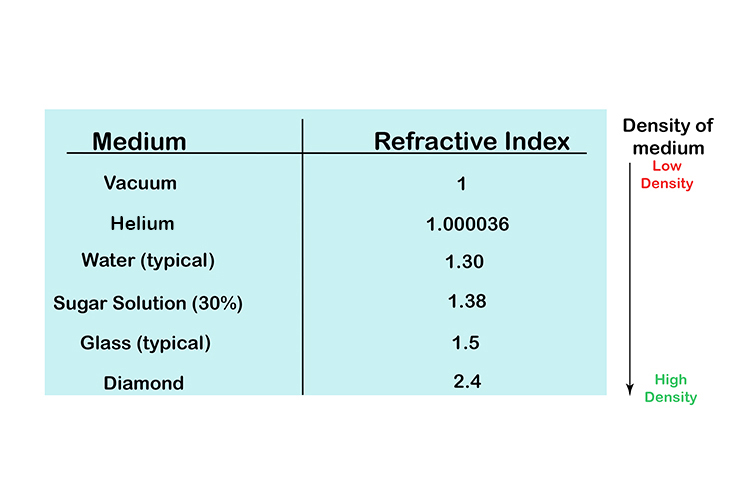
| NOTE: | Low refractive index is low-density medium |
| High refractive index is a high-density medium |
So a high-refractive index `(n)` bends a lot more towards the normal line and a low refractive index `(n)` bends very little towards the normal line.
HIGH N° `n` = Much bend (HIGH bend) towards normal line
LOW N° `n` = Little bend (LOW bend) towards the normal line
Refraction of air to water `n=1.3`
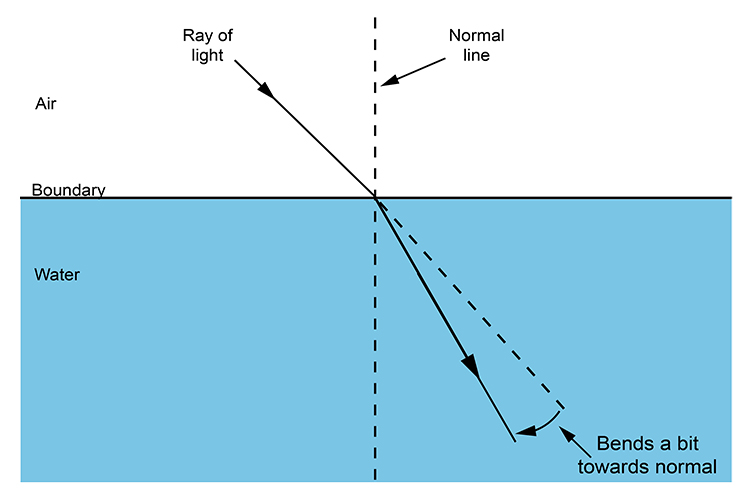
Refraction of air to glass `n=1.5`
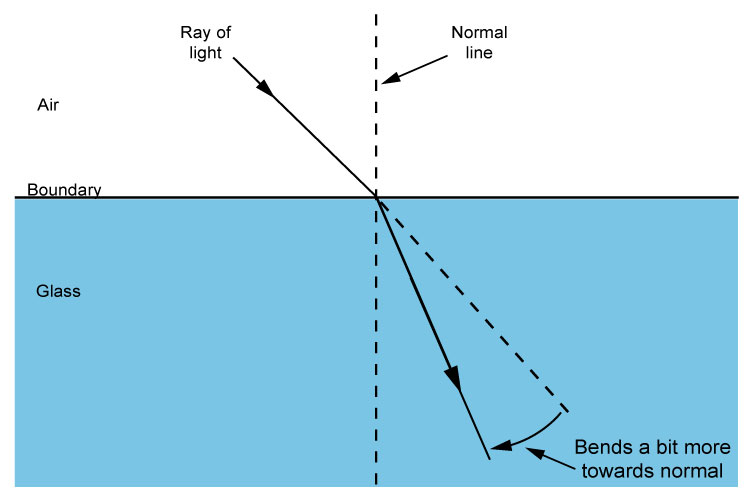
Refraction of air to diamond `n=2.4`
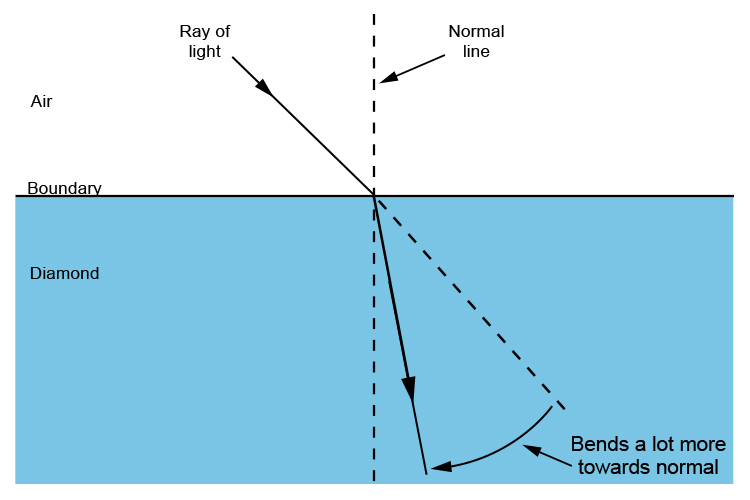
We can then use this information to find any angle of refraction when we know the value `n` (refractive index) and angle of incidence `(theta\i)` for any light ray travelling from air to a thicker medium.
`n=(sin\theta\i)/(sin\theta\r)`
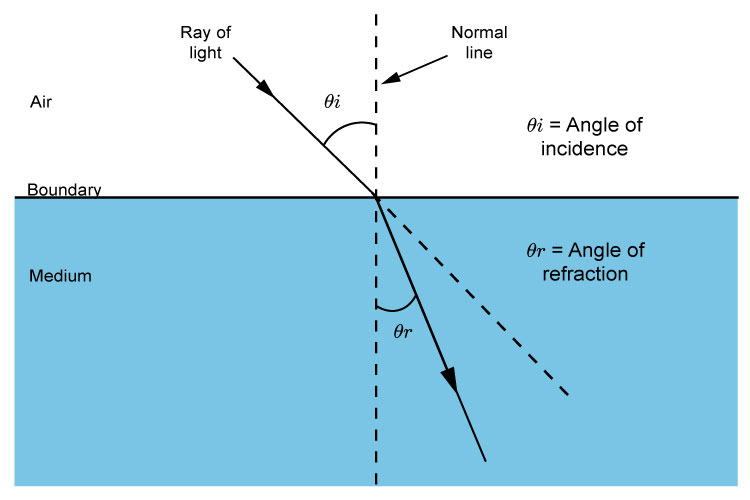
Refraction of air to water
`n=1.3` and `theta\i=45^circ`
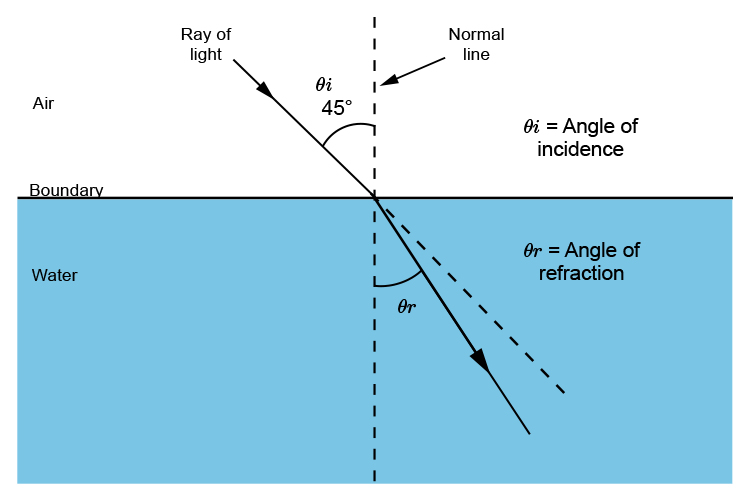
`n=(sin\theta\i)/(sin\theta\r)`
`1.3=(sin45)/(sin\theta\r)`
Divide both sides by 1.3 and multiply both sides by `sin\theta\r` to get `sin\theta\r` on its own.
`sin\theta\r=(sin45)/1.3`
`sin\theta\r=0.7071/1.3=0.5439`
`\theta\r=sin^(-1)\0.5439`
`\theta\r=32.95^circ~~33^circ`
Refraction of air to glass
`n=1.5` and `theta\i=45^circ`
`n=(sin\theta\i)/(sin\theta\r)`
`1.5=(sin45)/(sin\theta\r)`
Divide both sides by 1.5 and multiply both sides by `sin\theta\r` to get:
`sin\theta\r=(sin45)/1.5`
`sin\theta\r=0.7071/1.5=0.4714`
`\theta\r=sin^(-1)\0.4714`
`\theta\r=28.12^circ~~28^circ`
Refraction of air to diamond
`n=2.4` and `theta\i=45^circ`
`n=(sin\theta\i)/(sin\theta\r)`
`2.4=(sin45)/(sin\theta\r)`
Divide both sides by 2.4 and multiply both sides by `sin\theta\r` to get:
`sin\theta\r=(sin45)/2.4`
`sin\theta\r=0.7071/2.4=0.295`
`\theta\r=sin^(-1)\0.295`
`\theta\r=17.16^circ~~17^circ`
Summary
When light shines at 45° towards a surface the angle from the normal line to the refracted ray is:
| Water | = | 33° | ||
| Glass | = | 28° | ||
| Diamond | = | 17° |
Water 33°
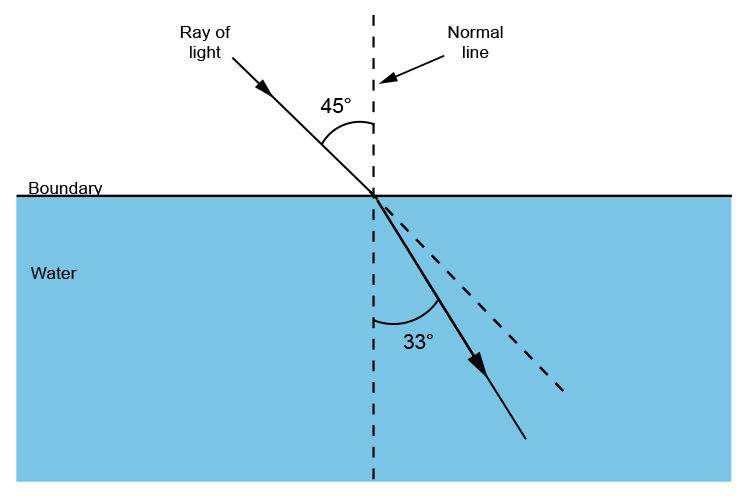
Glass 28°

Diamond 17°
